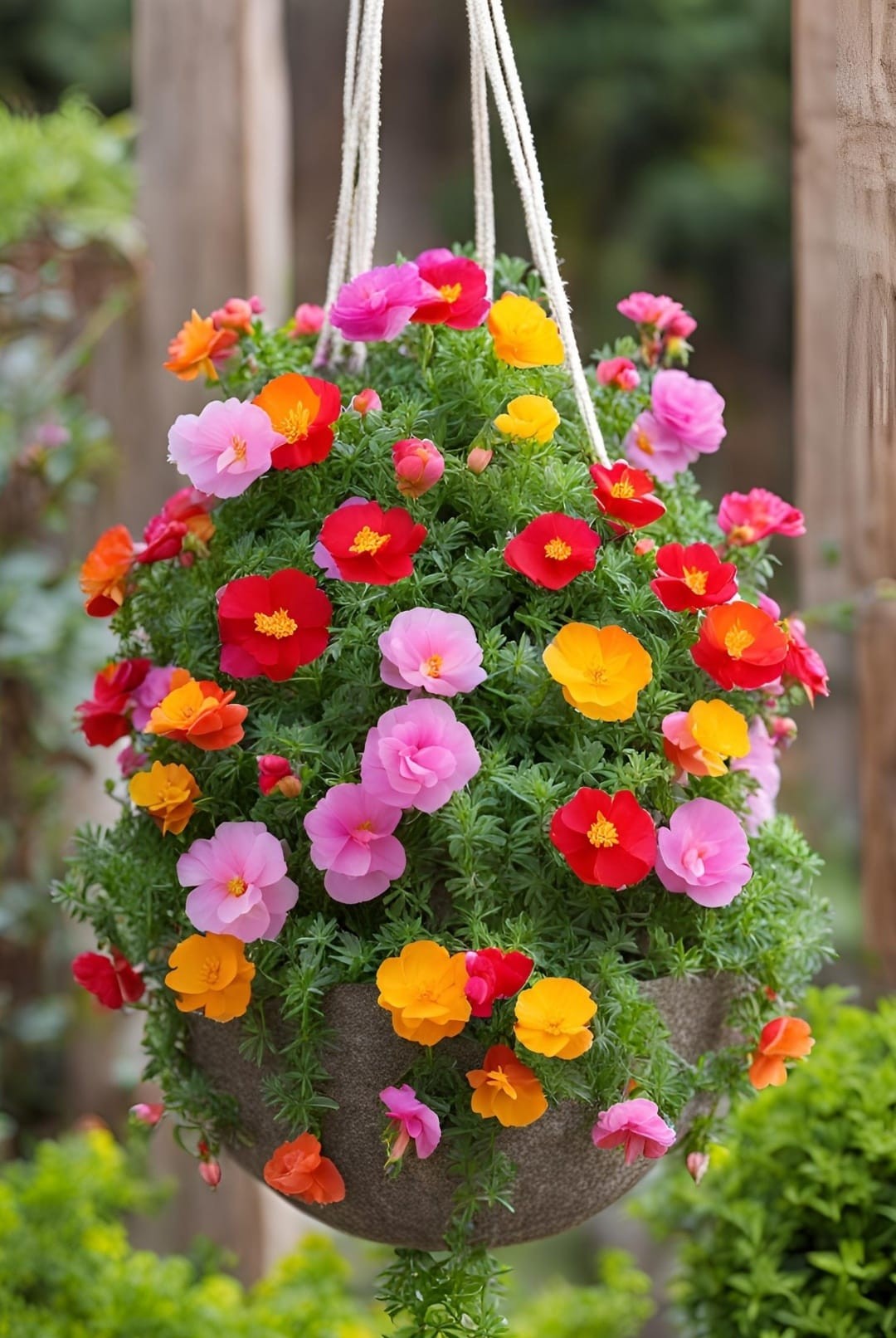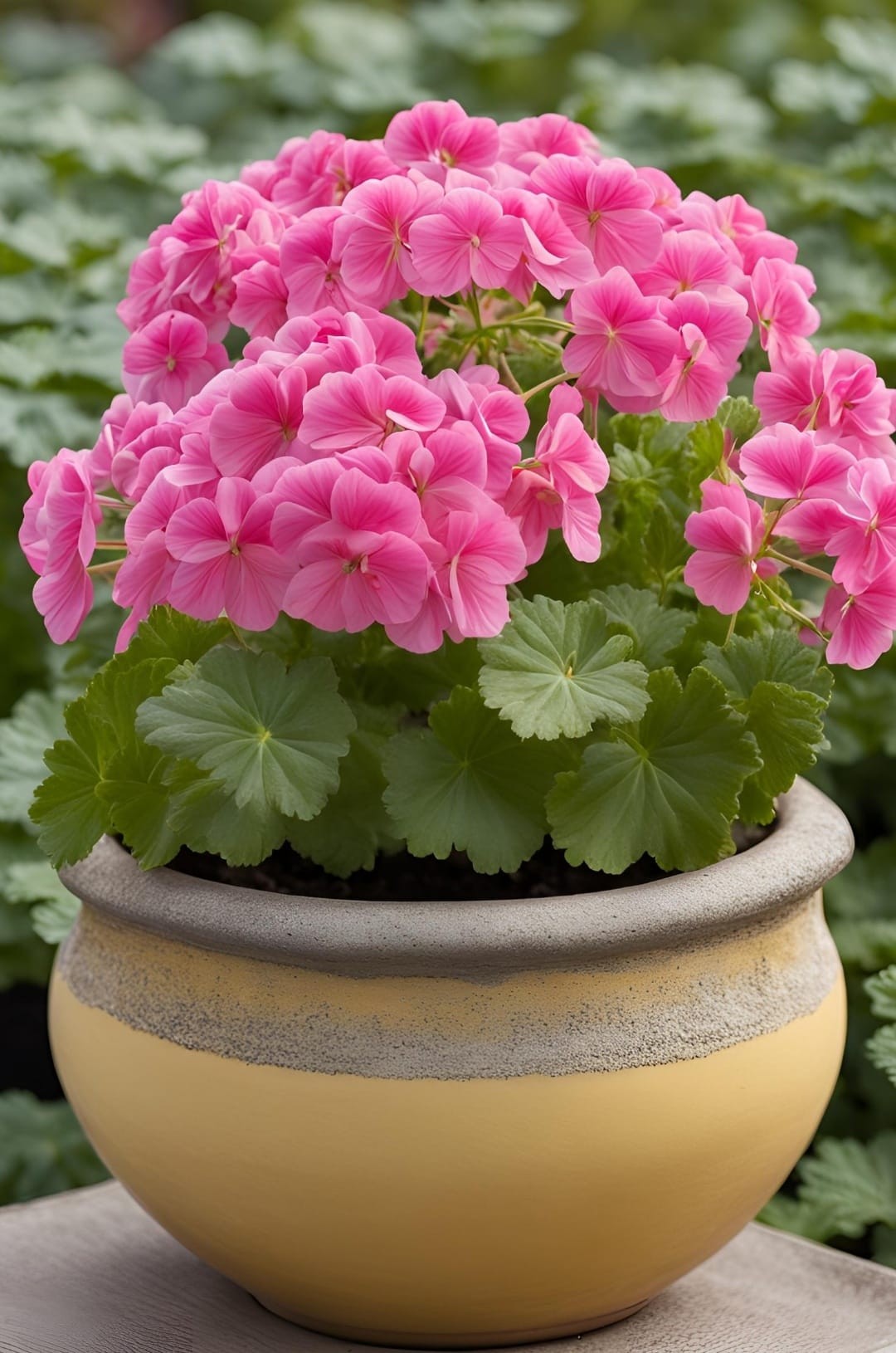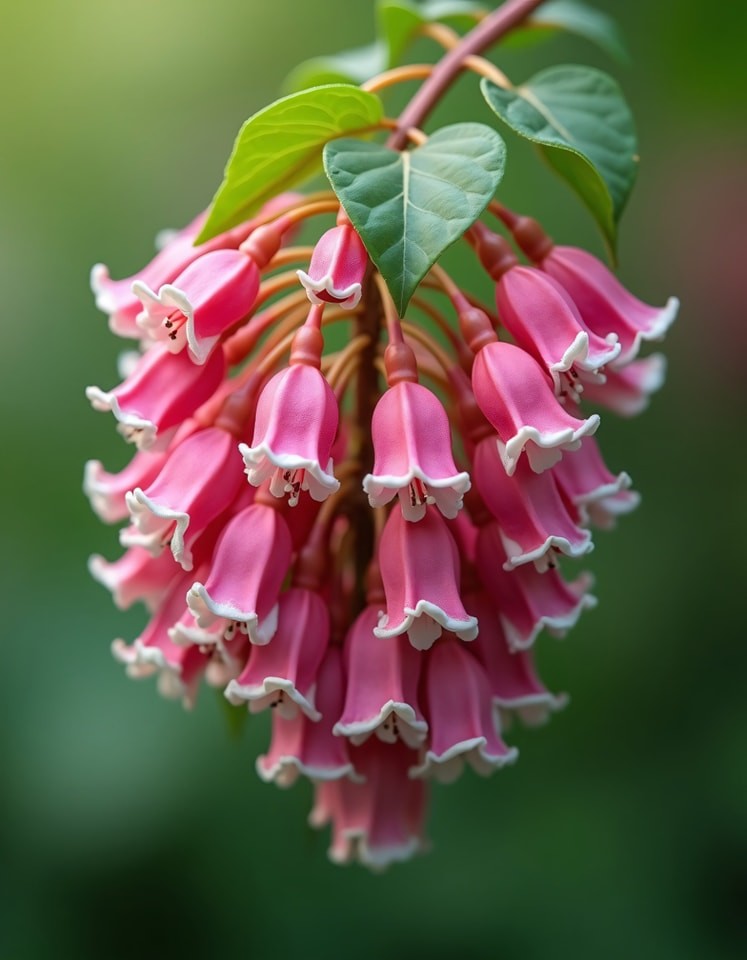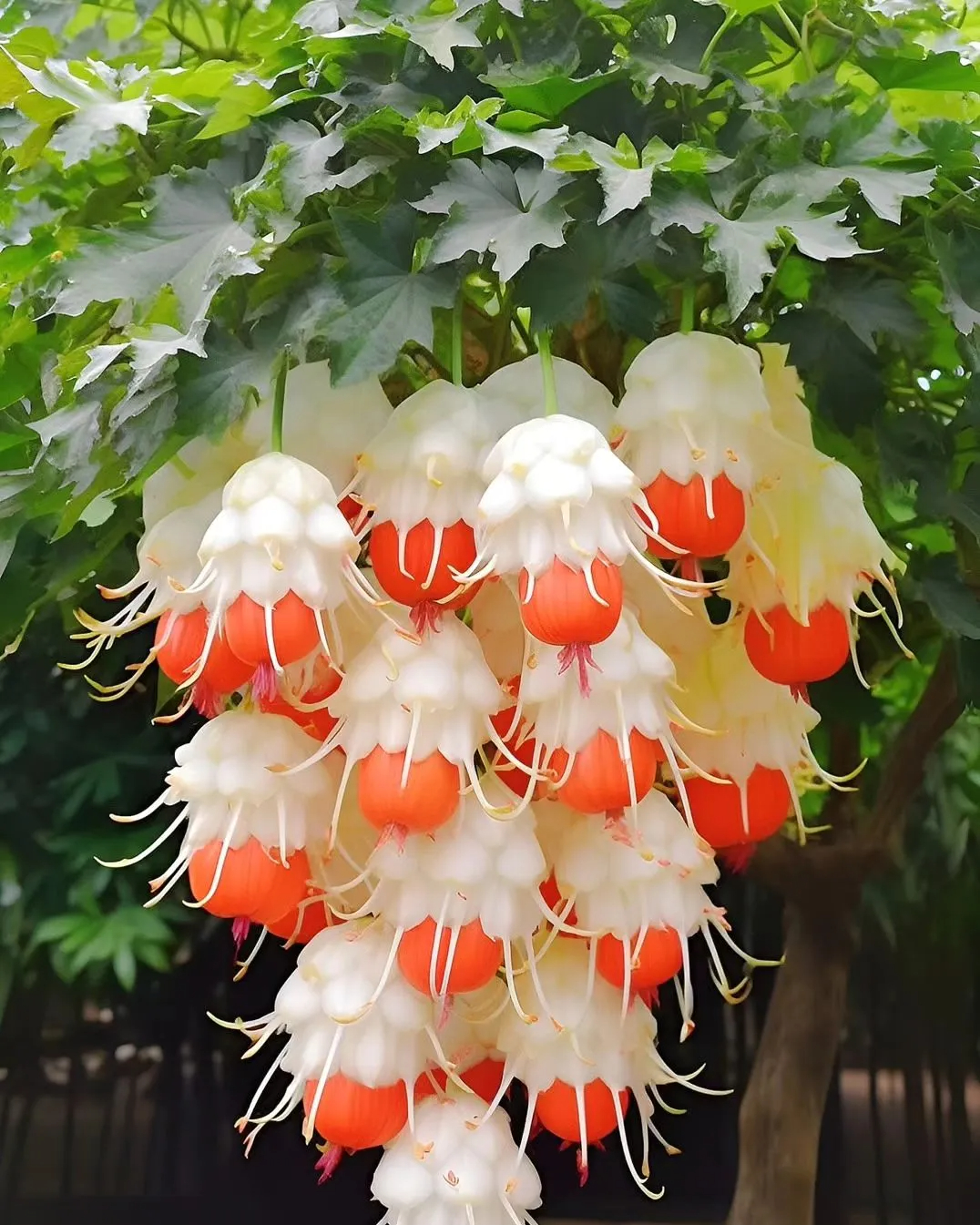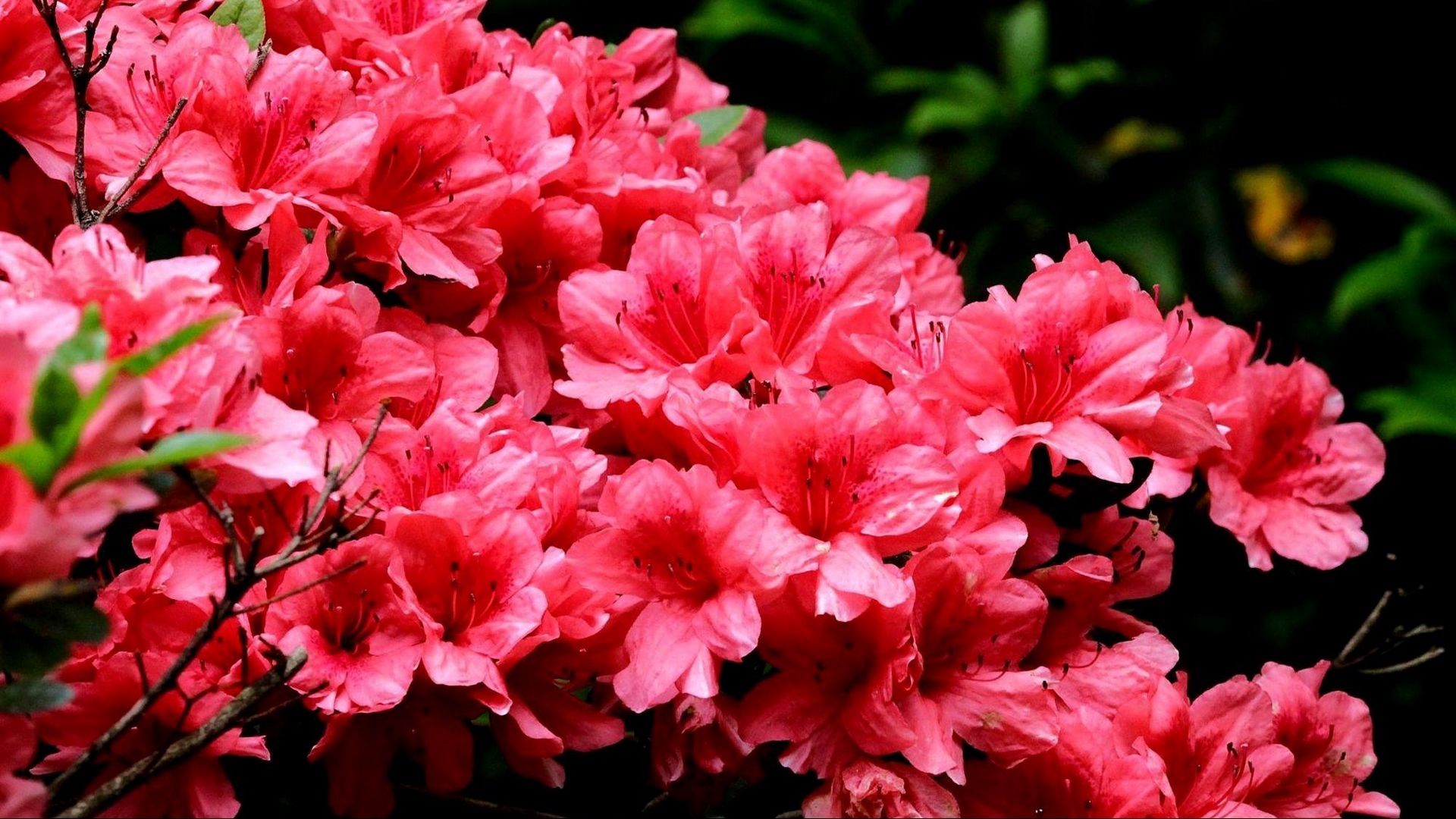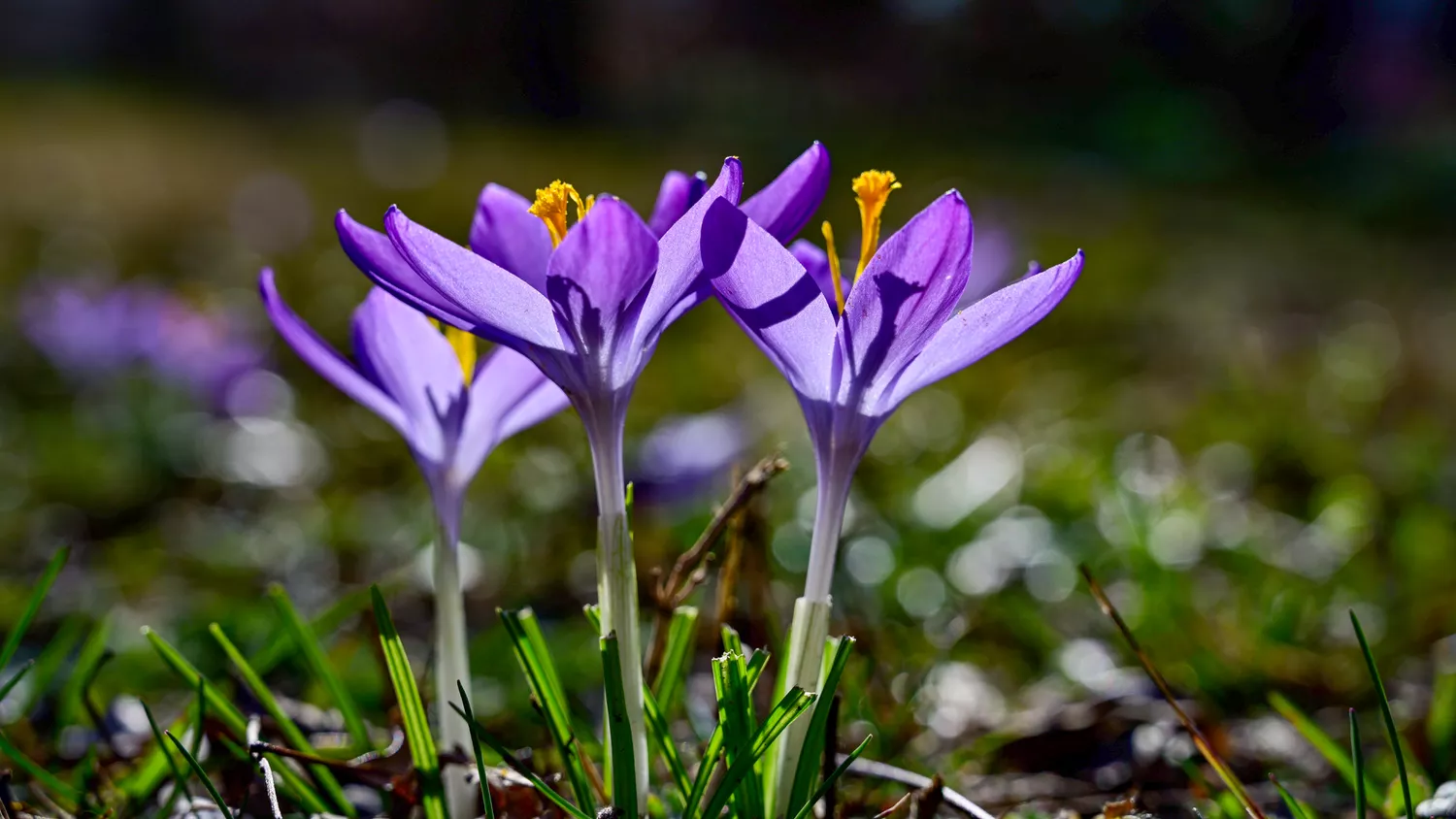In the most unlikely of places, where rock meets earth and cracks abound, a delicate yet resilient flower blooms: the saxifrage (Saxifraga spp.). With its tenacity and beauty, this flowering plant defies all odds and thrives in seemingly inhospitable environments. Join us as we explore the world of the saxifrage, discovering its appearance, its adaptations, and its significance in the natural world.
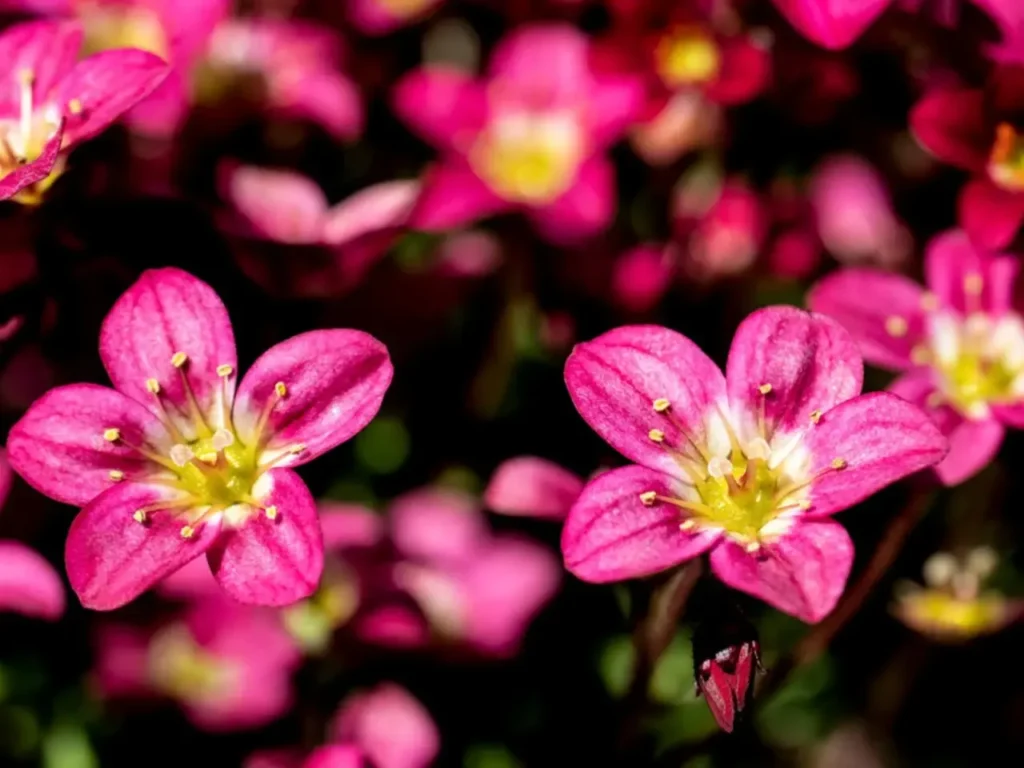
Appearance and diversity
Saxifrages is a diverse genus that includes hundreds of species and comes in many shapes, sizes, and colors. These perennials can be found in a wide variety of habitats around the world, from mountains to Arctic tundra, from rocky outcrops to alpine meadows. The appearance of saxifrage flowers varies depending on the species, but they typically have five-petaled flowers in shades of white, yellow, pink, or purple. Some species produce clusters of flowers, while others have solitary flowers.
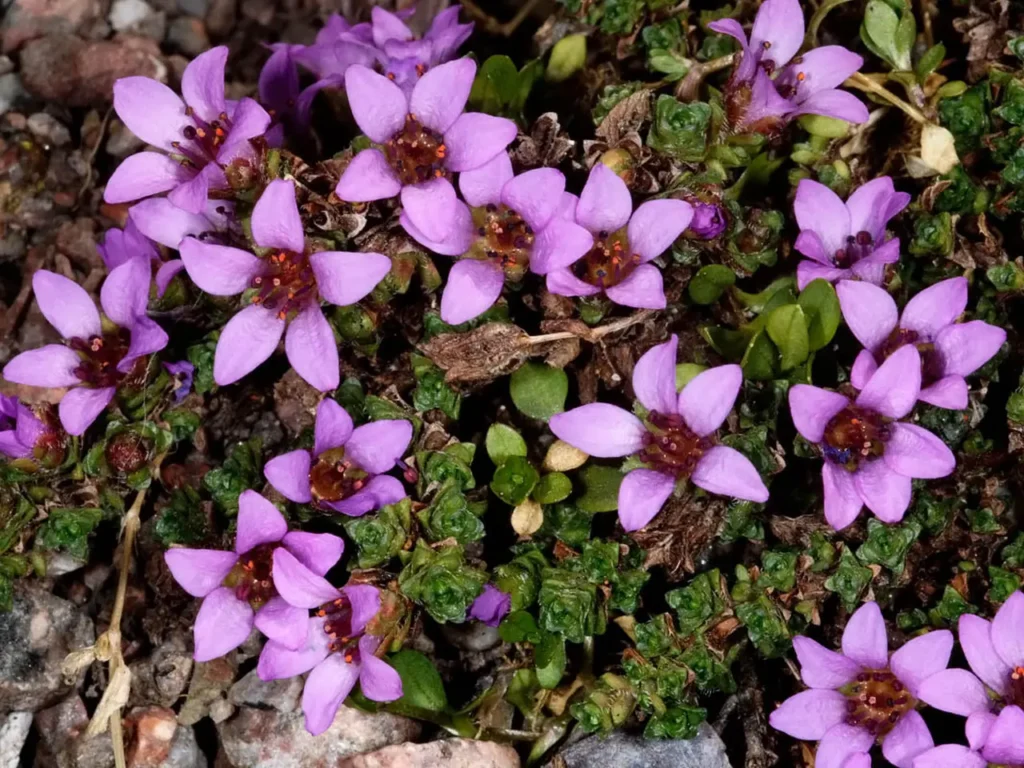
Color of saxifrage flowers
Saxifrage flowers come in a variety of colors, depending on the specific species and cultivar. Here are some common colors associated with saxifrage flowers:
- White: Many saxifrage species have pure white flowers, creating a classic and elegant look. The white flowers of saxifrage plants often stand out against a backdrop of dark green foliage.
- Pink: Pink is another popular color seen in saxifrage flowers. Shades of pink can range from pale pastels to deep, vibrant pinks, adding a soft, delicate touch to gardens and landscapes.
- Yellow – Some saxifrage species produce bright yellow flowers, which can be quite striking and add a cheerful splash of colour to the garden. Yellow flowers can range from a soft buttery colour to a more vibrant shade.
- Purple: Some Saxifrage varieties produce beautiful purple flowers, ranging from pale lavender to deep, dark purple. Purple saxifrage flowers can create a sense of depth and richness when displayed in the garden.
- Red: Although less common, there are species of saxifrage that produce red flowers. The red flowers can vary in intensity and can add a bold, eye-catching element to flower beds or rock gardens.
It is important to note that specific color variations can vary depending on the species and cultivar of saxifrage. Each saxifrage flower is unique in its beauty and color choice can depend on personal preference and the desired aesthetic in the garden.

Adapt and Recover
Saxifrage has unique adaptations that allow it to survive and thrive in challenging environments. Its ability to grow in rock crevices, gravelly soils, and other rocky habitats is facilitated by its shallow, fibrous root system. This allows the plant to be firmly anchored while accessing minimal nutrients and moisture from the surrounding substrate.
Many species of saxifrage have succulent, water-retaining leaves that help them endure periods of drought and survive in poor soils. Additionally, some species have a rosette-like growth form, with leaves arranged in a circular pattern at the base, which maximizes sunlight absorption and reduces water loss through transpiration.
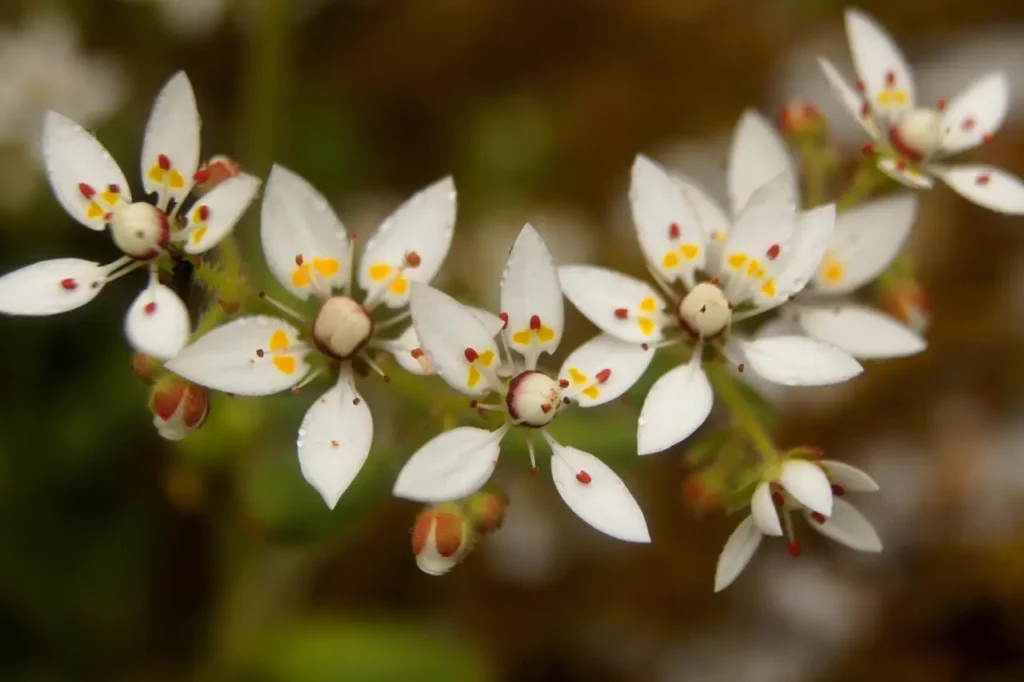
Ecological importance
Saxifrage flowers play an essential role in their ecosystem. Because they bloom early, they provide an important source of nectar for pollinators, including bees, butterflies and flies, in early spring or summer when there are fewer flowers. Their presence supports the health and diversity of pollinator populations and contributes to the pollination of other plants in their habitat.
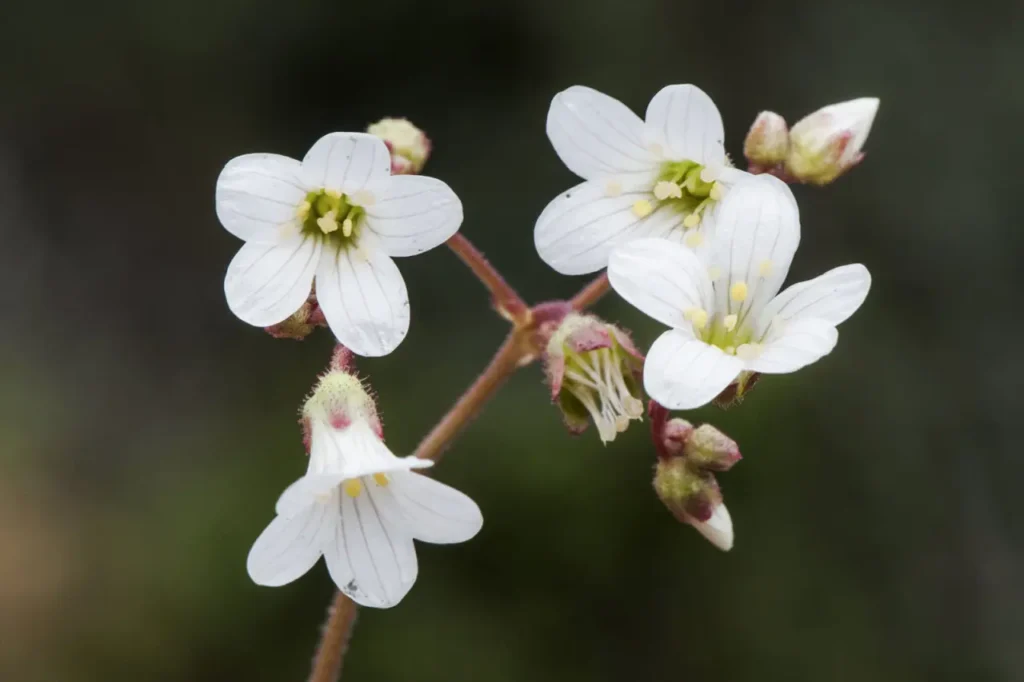
Conservation and threats
Although saxifrages are not generally considered endangered, some species do face threats from habitat loss, land development, and climate change. Destruction of rockweed habitat, pollution, and overgrazing can disrupt their fragile ecosystems. Conservation efforts focused on preserving rockweed habitat, reducing habitat fragmentation, and raising awareness of the importance of these hardy flowers are critical to their long-term survival.
Cultural Significance: The saxifrage has also captured the human imagination throughout history. In folklore and traditional medicine, the plant has medicinal properties and is used to treat a variety of ailments. Its beauty and ability to thrive in harsh environments have also inspired artists and poets, symbolizing resilience, strength, and adaptability.

Praising the resilience of nature
The saxifrage flower reminds us of the remarkable resilience and beauty found in the most unexpected places. Its ability to thrive in the most hostile environments is a testament to the strength and resilience of nature. By appreciating and protecting these resilient plants, we recognize the importance of biodiversity and the delicate balance that supports life on our planet.
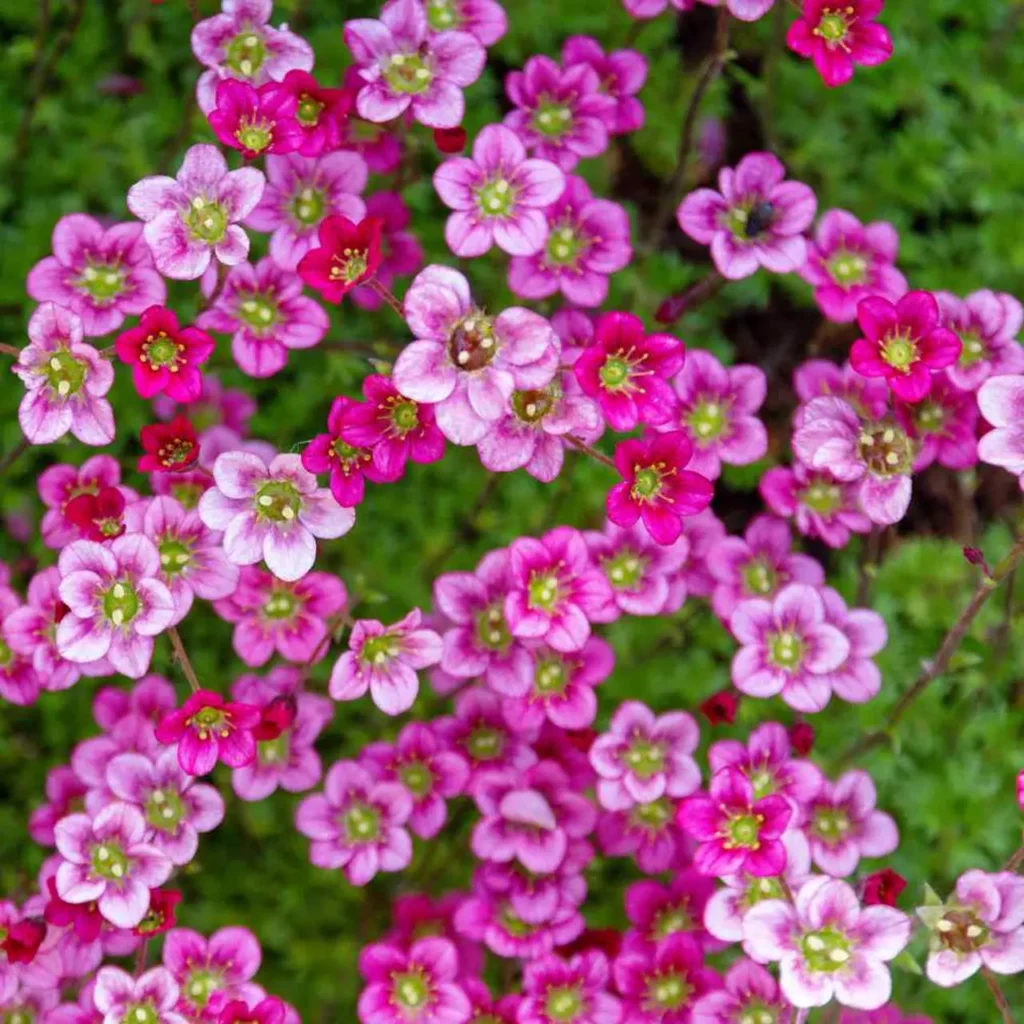


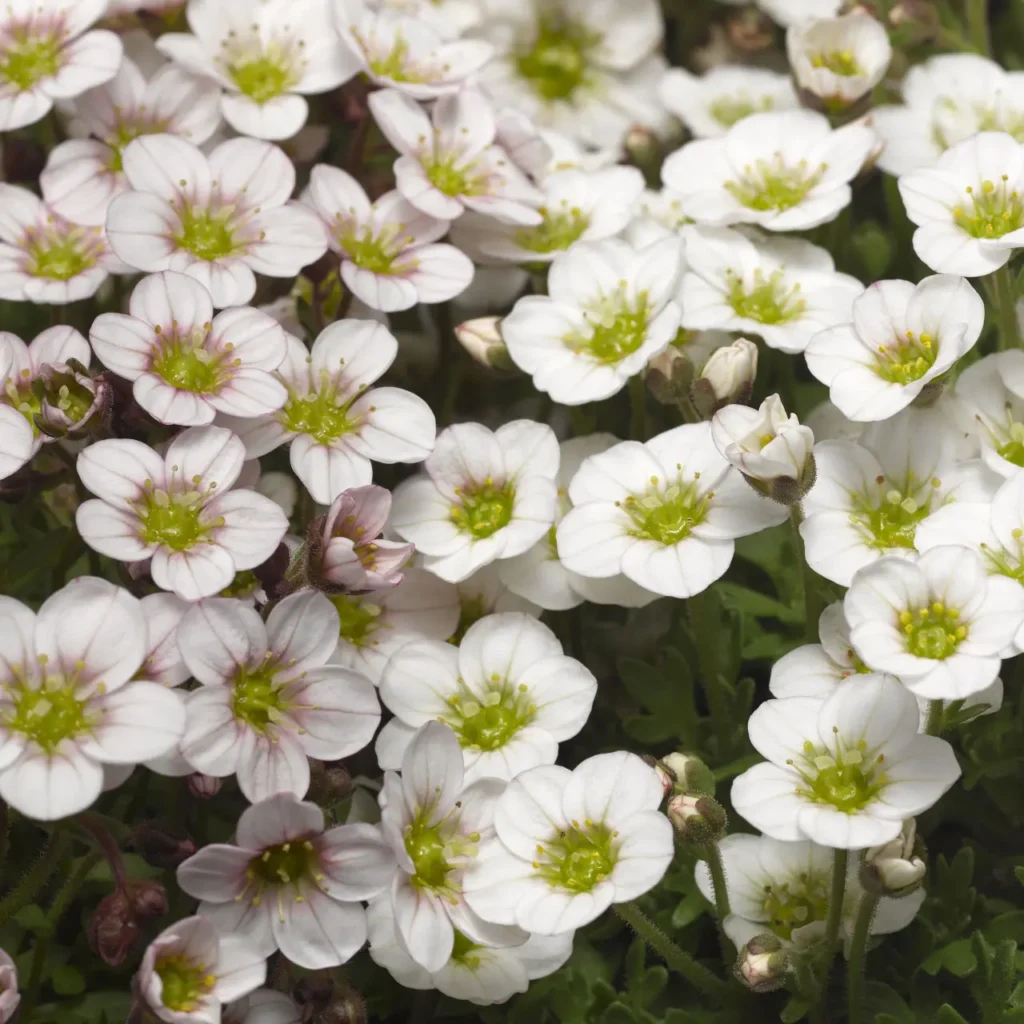
In the cracks and crevices of the rocky landscape, saxifrage symbolizes hope and perseverance, reminding us that even in the harshest conditions, life finds a way to flourish. Let us celebrate the remarkable beauty and resilience of saxifrage and strive to preserve the habitats that support its existence for generations to come.
